Late on a clear April afternoon, I was at the Martha’s Vineyard Museum listening to a trio of Island musicians. I was having a hard time watching them. Visible through the glass wall behind them, about a hundred yards away, two ospreys were engaged in a ferocious battle for occupancy rights to the top of a utility pole. One bird hunched down on the cross tie while the other repeatedly dive-bombed. Then the lower bird would rise to defend itself, and the two would go at each other in mid-air, with a tremendous battering of wings and flaring of talons.
Spectacular displays like this one have made me an osprey fanboy. There are a lot of us on this Island, where these godlike birds spend their summers and rear their young. Their nests, those shaggy eyries high atop poles, are familiar features of our landscape. As a summer visitor, I admired ospreys; now that I’ve lived here year-round for three years and learned more about them, I’m awed by them.
Let me take you through a year in the life of an osprey pair whom I’ll call Zeus and Hera. After spending the winter in South America, each in a different location, they migrate independently on their return to the Vineyard. Zeus arrives first, returning to the same nest he occupied last year, and he sets about making repairs. His work might not be artistic, but he builds on an impressive scale. Some osprey nests, made of tightly woven sticks and seaweed, weigh hundreds of pounds.
Zeus might be challenged by a young male who wants to drive him off the nest. He won’t give it up easily. Ospreys are monogamous, up to a point, but their first loyalty is to the nest. (Those young birds fighting outside the museum were probably freshmen, trying to establish their first nest; if they fail, they’ll stay as floaters and try again next year.)
Zeus will welcome Hera when she arrives. If for some reason she doesn’t make it back, he’ll perform a sky dance to attract another mate. Rising above the nest hundreds of feet into the air, maybe holding a fish in his talons, he’ll swoop, dip, hover and make a repeated announcement in a loud, screeching osprey voice. Rough translation: “I am a mighty fisherman, and I own a fabulous house. My mate will be a lucky bird.”
When Hera does arrive, she and Zeus will mate often, and she’ll lay her eggs – usually two or three. During the 38-day incubation period, she leaves them only for short periods each day. Her diet is 99% fish, and Zeus delivers her meals. If you look closely at the nest during the early summer, you might see Hera’s head, white with a black eye stripe. She’ll be peering back at you, and if she thinks you are a danger to her offspring, she’ll take wing, scream bloody murder and try to drive you away.
Zeus is no mere fisherman; he is an apex predator, one of evolution’s exclamation points. In every detail, he is designed to catch fish. On his large foot, the outer toe is reversible so that he can seize slippery fish with two talons in front and two behind. This same unique arrangement of talons enables him to carry fish head-first, which is easier than lugging them broadside. Another adaptation: backward facing barbs on his talons help Zeus hold fast to his prey.
Zeus is able to cover a lot of territory, of course, and he’s quick to figure out where the bite is on. He’s willing to range all over the Island, catching herring in Squibnocket Pond, snapper blues in the harbor and menhaden three miles offshore.
The chicks hatch in July, and by mid-August they’re ready to fly. Zeus won’t teach them to fish, and their first efforts might not succeed. Zeus will hang around for a while, supplementing their diet if need be. Hera leaves first, heading south for some R&R.
August is my favorite month for osprey watching. I’m lucky enough to have a porch overlooking the Lagoon, and in the late afternoon there are sometimes as many as eight ospreys patrolling the water. I’ve seen spectacular mid-air dog fights when one tries to take a fish from another. They glide, circle, soar and then they hover, positioning themselves, making precise calculations for their dive and – SWOOSH! SPLASH! They plunge, talons extended, hitting the water so hard that sometimes they are completely submerged.
They are something to behold, these birds. They put on a beautiful, thrilling air show, and I’m happy to have one of the best seats in the house.
__________________
Stephen Goodwin is the author of three novels and four non-fiction books on golf. He lives in Vineyard Haven.
A Conservation Success Story
The Vineyard osprey population is larger than ever, thanks to a community effort led by naturalist and educator Gus Ben David, the much beloved steward of the Island’s wild creatures. In 1971, when only two nesting pairs summered on the Island, Gus surmised that the only thing limiting the population was a lack of nesting sites. To test this hypothesis, he and a team of volunteers began placing poles in carefully selected locations. This year, the spring census tallied 110 nesting pairs.
Many, but not all, of these pairs are on the poles erected for them. According to Rob Bierregaard, a scientist/researcher whose field of study is birds of prey and who now coordinates the Vineyard’s annual census, about ten pairs occupy chimney nests, and ten are in tree nests. Other sites include a cell phone tower, a light stanchion at the Sharks’ baseball field and a pole at Veterans Park.
Suzan Bellincampi, director of Felix Neck Sanctuary, extols the citizen science efforts that have contributed to the growth of the osprey population. Observers have provided helpful data by watching single nests throughout the summer. Says Suzan, “Usually, bird watching means seeing a variety of birds. Watching an osprey family through the summer is a different, very rewarding experience. You see the whole life cycle, and the ospreys are spectacular birds. It’s easy to get attached to them.”
The next time you see an osprey and feel your spirits rise, give a silent thanks to Gus (pictured below) and his crew.

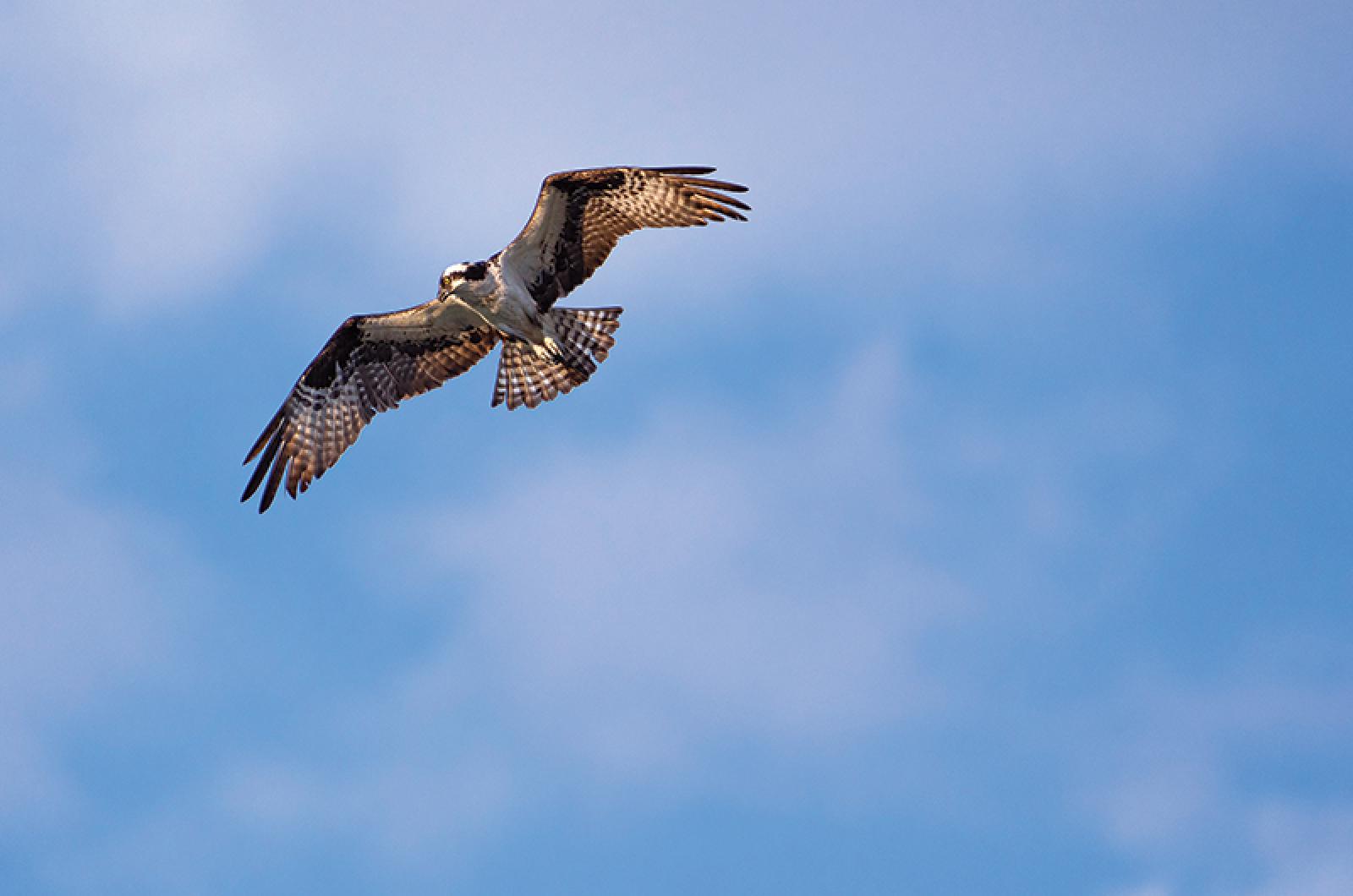



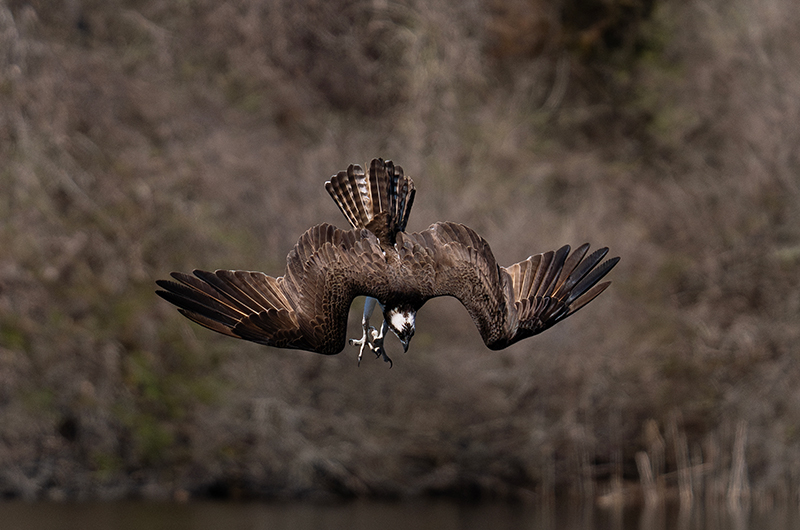
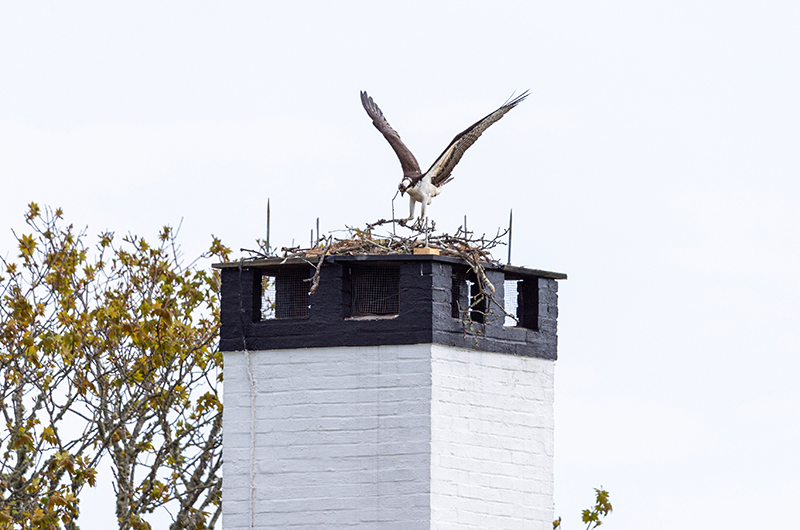
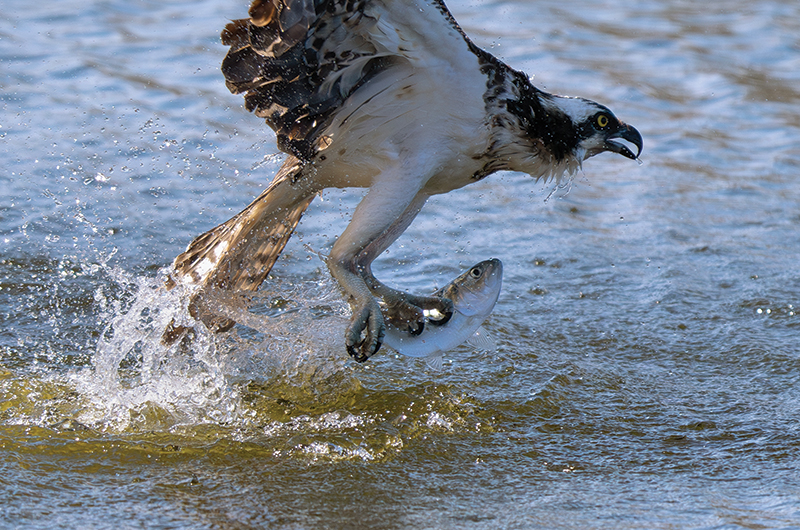
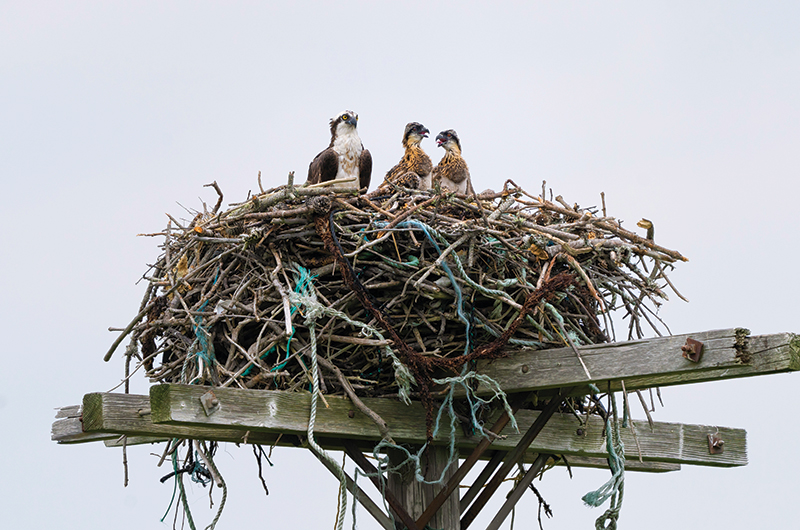
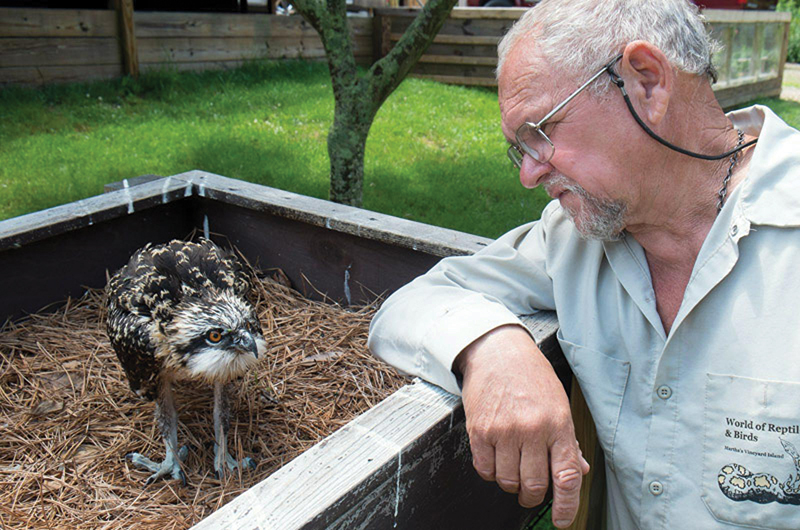
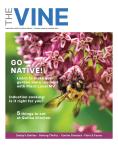
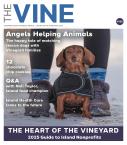

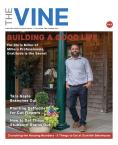
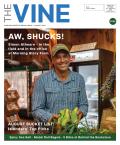

Comments